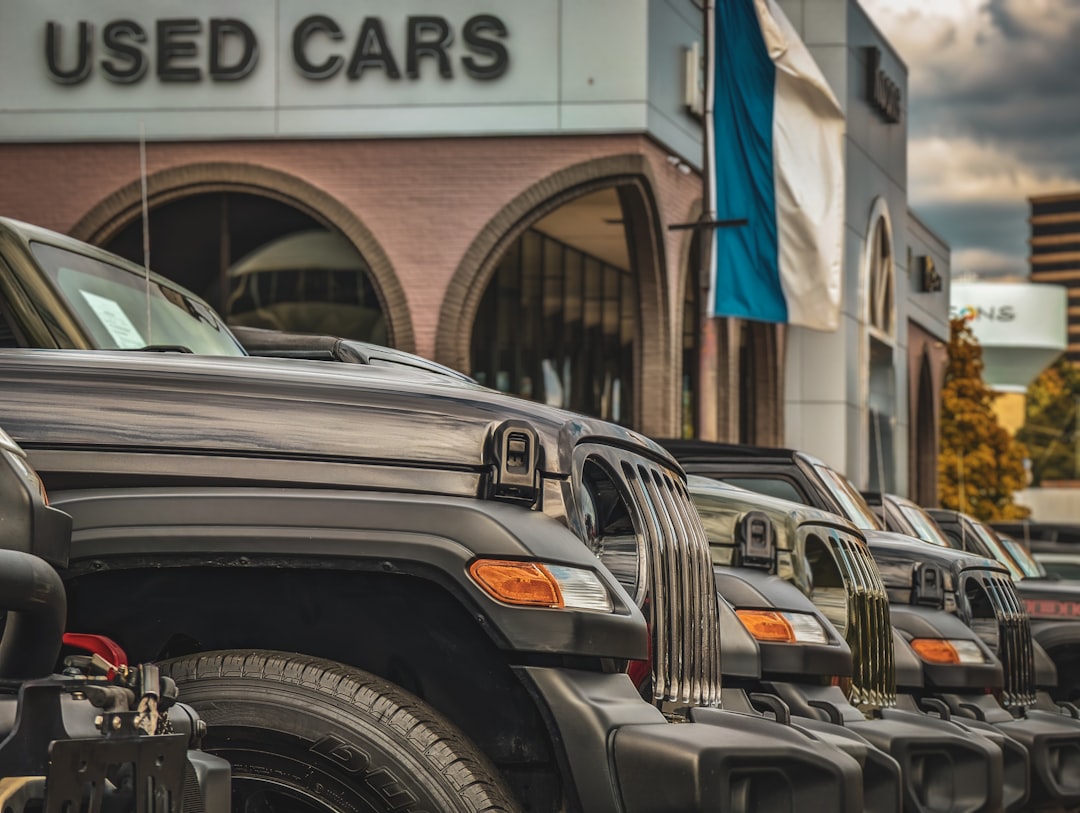

Engage prospects with a scan and streamline customer engagement with FREE QR code marketing tools by Sona – no strings attached!
Create a Free QR CodeFree consultation

No commitment

Engage prospects with a scan and streamline customer engagement with FREE QR code marketing tools by Sona – no strings attached!
Create a Free QR CodeFree consultation

No commitment
Diecast car dealerships operate in a digital-first world where collectors expect fast, seamless access to information, inventory, and preorders. Traditional marketing like flyers and static displays can spark interest but rarely capture identity or intent, which leads to missed follow-up and wasted traffic. QR codes bridge that gap by turning any physical moment into a digital next step with one scan.
Strategic QR deployment transforms display cases, signage, packaging, and event materials into measurable lead capture. With dynamic routing and real-time analytics, dealerships identify high-intent collectors, enroll them in CRM or marketing automation instantly, and trigger personalized follow-up. The result is a cleaner pipeline, faster sales cycles, and better attribution for every dollar spent, as outlined in Sona on offline attribution.
This guide explains how to implement a data-driven QR code strategy tailored to diecast retailers. Whether you run a boutique shop or a multi-location dealership, you will learn where to place codes, which formats to use, how to track scans to revenue, and what it takes to scale with a centralized platform like Sona QR.

Diecast car dealerships often lose their best prospects in the moments that matter most: when a collector leans over a display case, pauses at a rare model plaque, or flips a limited-run package in their hands. Without an easy way to act in that moment, curiosity fades and identity remains anonymous. QR codes solve this by connecting those point-of-interest moments directly to digital destinations like spec pages, preorder forms, and waitlists.
Replacing analog processes is a fast path to measurable gains. Paper brochures get lost; manual sign-up sheets produce illegible emails; phone calls after events go unanswered because consent was never captured. A QR code placed beside a model with a benefit-driven call to action gives collectors an instant path: scan for specs, join the priority list, or unlock a limited preorder. With Sona QR, you can create these codes in minutes, route scans to the right destination based on context, and capture first-party data at the source. Start creating QR codes for free.
With the right toolkit, dealerships automate scan tracking, segment by intent, and launch instant follow-up. The result is a tighter feedback loop from display to database, where every showroom glance becomes a qualified opportunity you can nurture over time.

Collectors are surrounded by print and physical displays, yet their journeys are increasingly digital. The gap between offline interest and online action explains why many dealers struggle with declining response rates, stale CRM data, and thin attribution. QR codes solve these issues by making every physical touchpoint actionable and measurable.
In diecast retail, speed and convenience matter. Shoppers want to compare variants, check scale accuracy, or reserve a model before stock runs out, just as QR has improved engagement in automotive showrooms. A scan is faster than a search, and a precise landing page beats a generic homepage. You remove the delay and ambiguity that cause drop-off, then collect opt-in and preferences without friction.
By aligning QR journeys with real collector behavior, diecast dealers make offline experiences measurable and turn anonymous traffic into engaged, high-fit audiences.

Diecast dealerships benefit from several QR formats that match specific goals: education, capture, and conversion. Selecting the right type helps you route collectors to the best next step without adding friction.
Dynamic QR codes are especially useful in this vertical because inventory, drops, and promotions change frequently. You can update destinations post-print, run A/B tests on copy, and segment audiences by placement, all from a single platform like Sona QR. Static codes are fine for evergreen assets like a general contact card or store hours, but they lack editability and detailed analytics.
Dynamic codes managed in Sona QR let you test variations of the same QR across locations and media, track results centrally, and pivot the destination quickly when inventory status changes.

Lead capture improves when you meet collectors where they already engage with your merchandise. QR codes excel in environments with high curiosity and frequent micro-decisions: the bread and butter of diecast retail. By placing distinct, trackable codes in strategic locations, you will identify which models and messages turn interest into action.
Scan data also reveals hidden buying patterns. You might see a spike in scans for a specific scale or manufacturer during weekend afternoons or discover that window shoppers scan more for preorders than for in-stock items. Use these insights to tailor staffing, promotions, and inventory.
Placing codes in these high-intent zones will quickly clarify where to double down and where to adjust messaging, placement, or offers.

Well-designed QR experiences map directly to core dealership goals: educate quickly, capture identity decisively, and guide the collector to the next best action. Each use case below links a physical context to a digital outcome you can track and optimize.
Think of QR codes as the connective tissue for your omnichannel experience. Place them wherever a collector pauses to admire a model or consider a purchase. Then route each scan to a specific landing page designed for that moment’s intent.
Each use case turns an offline action into a measured signal. With Sona QR, you can centralize setup, track performance, and automate post-scan journeys so that one interaction matures into a series of helpful, personalized touches.
Every scan is a data point: it captures intent, timing, context, and often location. When you deploy multiple codes across your physical footprint, you begin building behavior-based segments that outperform broad demographic targeting. Instead of guessing who wants what, you use what people scanned to drive personalized nurture.
In diecast retail, four audience distinctions often matter: new collectors versus seasoned enthusiasts, preorder hunters versus in-stock buyers, gift shoppers versus hobbyists, and trade partners versus retail customers. QR scans help you sort these groups automatically, then route each to the most relevant messages and offers.
With streamlined data flows, your team can retarget based on what collectors actually do, not vague personas. That precision increases relevance and return on ad spend while reducing list fatigue and opt-outs. For advanced tactics, use Sona’s intent-driven retargeting.
QR codes unify your offline and online marketing by making every physical impression measurable and interactive. The same code that powers an expo scan can route to a different experience in-store based on context, yet be managed centrally. This is how you achieve always-on attribution across print, events, signage, and packaging.
Use QR codes to layer data collection on channels that were previously hard to measure. Instead of guessing which brochure drove foot traffic or which window creative pulled passersby inside, you can prove it with scan data. With Sona QR, each code is unique, trackable, and editable so you can optimize mid-campaign.
QR codes are the offline on-ramp to your digital marketing engine. Centralized management through Sona QR ensures you can monitor performance, sync data with your CRM, and execute cohesive campaigns that span surfaces and screens.
Your first QR campaigns should be simple, fast to deploy, and tightly aligned with one or two measurable outcomes. As you learn what works, scale into more placements and build automations that turn every scan into a personalized journey.
The following steps outline a repeatable process that diecast dealerships can follow for launches, events, and evergreen showroom experiences.
Start with a single, high-impact moment where identity capture is currently weak. For example, “Join the limited-edition waitlist” on a display card for a soon-to-arrive model, or “Scan for provenance and reserve now” on a rarity plaque considered a grail item.
Tie the use case to a clear business outcome such as increasing preorders by 20 percent, doubling event lead capture, or improving post-purchase review volume. If you attend conventions, a vertical-specific goal might be “VIP RSVP for the Saturday launch session” or “Trade partner inquiry for bulk orders.”
Choose a dynamic QR code for any campaign that benefits from editability, A/B testing, and analytics. Dynamic codes let you change destinations, add UTM parameters, and segment by placement without reprinting.
Use static QR codes for fixed, evergreen destinations like a contact card or store hours. However, remember that static codes cannot be edited and offer limited tracking compared to dynamic codes in Sona QR.
Make the QR unmistakably yours. Add your logo, use brand colors with adequate contrast, and frame the code with a clear promise: “Scan for 360 tour,” “Scan to reserve,” or “Scan for live inventory.” Pair with a directional arrow and leave white space for easy scanning.
Before printing, test on multiple devices and under real conditions: glossy acrylic display cards, low light under cases, and angled scanning on window glass. Confirm fast load times and mobile-friendly landing pages to avoid drop-off at the moment of intent.
Roll out codes where intent is highest. In the showroom, focus on display cases, price tags, and counter mats. For events, use booth banners, table toppers, and badge inserts. In direct mail, tie each code to a personalized landing page and a specific incentive.
Match placement to the scanning context and the outcome you want. Window signage catches passersby for awareness or waitlists, while packaging inserts drive post-purchase reviews and cross-sells. Track each placement separately so you can reallocate budget to the surfaces that pay off.
Instrument every destination with UTM parameters and use Sona QR to monitor scans by time, device, and location. Watch for drop-off points, like landing pages that load slowly or forms with too many fields, then fix them quickly.
Run A/B tests on copy and calls to action. For example, test “Scan for provenance” versus “Scan for production numbers” on rarity plaques, or “Reserve now” versus “Join the waitlist” on limited drops. Use your insights to inform the next print run and to refine digital retargeting.
Proactively tightening this loop is the difference between nurturing high-intent prospects and losing them to a competitor who follows up faster.
Attribution has long been a blind spot in diecast retail because so much happens offline. QR codes fill that gap by turning physical engagement into precise, time-stamped data. When you connect scans to your CRM and commerce systems, you gain a complete view of the journey from first glance to repeat purchase.
Simple scan counts are not enough. You need to know which code was scanned, where it lived, what it promised, and whether it led to a form fill, a preorder, or an add-to-cart. Sona QR and Sona.com extend beyond raw scan data to identity resolution and multi-touch attribution, so you can connect the dots across surfaces and channels.
With robust analytics in place, your QR program becomes a performance engine rather than a novelty. You can prove impact, secure budget, and keep iterating toward higher scan rates and better conversion.
Scaling your QR efforts requires a blend of thoughtful design, smart data practices, and consistent team enablement. The most successful dealerships treat QR codes as part of a larger customer journey, not as isolated links.
As campaigns expand, prioritize data cleanliness and automation. Unique codes per placement, consistent UTM parameters, and CRM syncs protect you from muddy attribution. Train staff to promote scanning and to explain the benefits clearly, especially for collectors less familiar with digital tools.
Centralize management through Sona QR to keep data secure, coordinate campaigns across locations, and maintain a single source of truth for performance. That foundation makes it easier to scale without losing control of quality or compliance.
Diecast car dealerships thrive on moments of fascination: the shine of a new casting, the surprise of a rarity, the thrill of a limited drop. QR codes turn those moments into measurable action by giving collectors a frictionless way to learn more, raise a hand, and stay connected. When paired with strong analytics and automation, QR programs deliver the visibility and velocity retailers need to grow.
The strategy is straightforward. Put scannable, benefit-oriented prompts wherever curiosity peaks; route scans to focused experiences; capture identity and intent; and use the data to personalize the next step. With Sona QR, you can generate codes in minutes, track performance in real time, sync with your CRM, and connect scans to revenue through Sona.com. The payoff is a connected customer journey, from showroom to follow-up to long-term loyalty.
For diecast car dealerships, now is the time to transform offline traffic into a digital pipeline. Each scan becomes a signal. Each signal becomes an opportunity. Deploy QR codes thoughtfully, measure what matters, and you will convert more curiosity into ownership while building a collector community that keeps coming back.
QR codes have transformed diecast car dealerships from traditional sales points into interactive, data-driven lead generation hubs. By integrating QR codes into your showroom displays, promotional materials, and events, you can capture high-quality leads, deliver personalized customer experiences, and gain real-time insights into which models and offers spark the most interest. Imagine knowing exactly which marketing efforts drive showroom visits and online inquiries—and being able to optimize on the fly.
With Sona QR, creating dynamic, trackable QR codes is effortless. Update campaigns instantly without reprinting, monitor each scan’s activity, and connect every lead directly to your sales pipeline. This means no missed opportunities and a clear path from customer curiosity to closed deal. Start for free with Sona QR today and turn every scan into a promising lead for your dealership’s growth.
Diecast car dealerships can implement QR codes by placing them at high-intent touchpoints like display cases, price tags, event banners, and packaging to provide instant access to model specs, preorders, and waitlists, capturing leads and enabling personalized follow-up.
QR codes provide fast, seamless access to information, enable measurable lead capture, improve attribution of marketing spend, reduce friction in data collection, and allow dynamic content updates without reprinting.
QR codes convert passive browsing into trackable engagement by linking physical touchpoints to mobile-optimized forms and landing pages that capture first-party data, opt-ins, and preferences directly into CRM systems for timely follow-up.
Practical use cases include providing detailed product information on display cards, collecting leads at events through sign-in forms, enabling customer feedback and upsell via packaging scans, offering contact details through vCards, and facilitating event registration and app downloads.
Dealerships can improve engagement by placing QR codes at natural pause points with clear calls to action, using dynamic content that updates based on inventory or context, tracking scan behavior to personalize follow-up, and integrating scan data with CRM and marketing automation tools.
Use Sona QR's trackable codes to improve customer acquisition and engagement today.
Create Your FREE Trackable QR Code in SecondsJoin results-focused teams combining Sona Platform automation with advanced Google Ads strategies to scale lead generation

Connect your existing CRM

Free Account Enrichment

No setup fees
No commitment required

Free consultation

Get a custom Google Ads roadmap for your business






Launch campaigns that generate qualified leads in 30 days or less.
